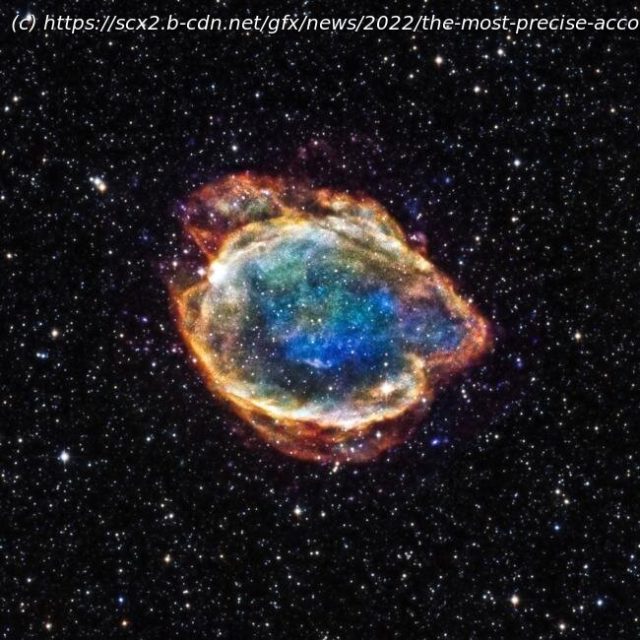Astrophysicists have performed a powerful new analysis that places the most precise limits yet on the composition and evolution of the universe. With this analysis, dubbed Pantheon+, cosmologists find themselves at a crossroads.
October 19, 2022
Astrophysicists have performed a powerful new analysis that places the most precise limits yet on the composition and evolution of the universe. With this analysis, dubbed Pantheon+, cosmologists find themselves at a crossroads.
Pantheon+ convincingly finds that the cosmos is composed of about two-thirds dark energy and one-third matter—mostly in the form of dark matter—and is expanding at an accelerating pace over the last several billion years. However, Pantheon+ also cements a major disagreement over the pace of that expansion that has yet to be solved.
By putting prevailing modern cosmological theories, known as the Standard Model of Cosmology, on even firmer evidentiary and statistical footing, Pantheon+ further closes the door on alternative frameworks accounting for dark energy and dark matter. Both are bedrocks of the Standard Model of Cosmology but have yet to be directly detected and rank among the model’s biggest mysteries. Following through on the results of Pantheon+, researchers can now pursue more precise observational tests and hone explanations for the ostensible cosmos.
«With these Pantheon+ results, we are able to put the most precise constraints on the dynamics and history of the universe to date,» says Dillon Brout, an Einstein Fellow at the Center for Astrophysics | Harvard & Smithsonian. «We’ve combed over the data and can now say with more confidence than ever before how the universe has evolved over the eons and that the current best theories for dark energy and dark matter hold strong.»
Brout is the lead author of a series of papers describing the new Pantheon+ analysis, published jointly today in a special issue of The Astrophysical Journal.
Pantheon+ is based on the largest dataset of its kind, comprising more than 1,500 stellar explosions called Type Ia supernovae. These bright blasts occur when white dwarf stars—remnants of stars like our Sun—accumulate too much mass and undergo a runaway thermonuclear reaction.
Because Type Ia supernovae outshine entire galaxies, the stellar detonations can be glimpsed at distances exceeding 10 billion light years, or back through about three-quarters of the universe’s total age. Given that the supernovae blaze with nearly uniform intrinsic brightnesses, scientists can use the explosions’ apparent brightness, which diminishes with distance, along with redshift measurements as markers of time and space.
That information, in turn, reveals how fast the universe expands during different epochs, which is then used to test theories of the fundamental components of the universe.
The breakthrough discovery in 1998 of the universe’s accelerating growth was thanks to a study of Type Ia supernovae in this manner. Scientists attribute the expansion to an invisible energy, therefore monikered dark energy, inherent to the fabric of the universe itself.






